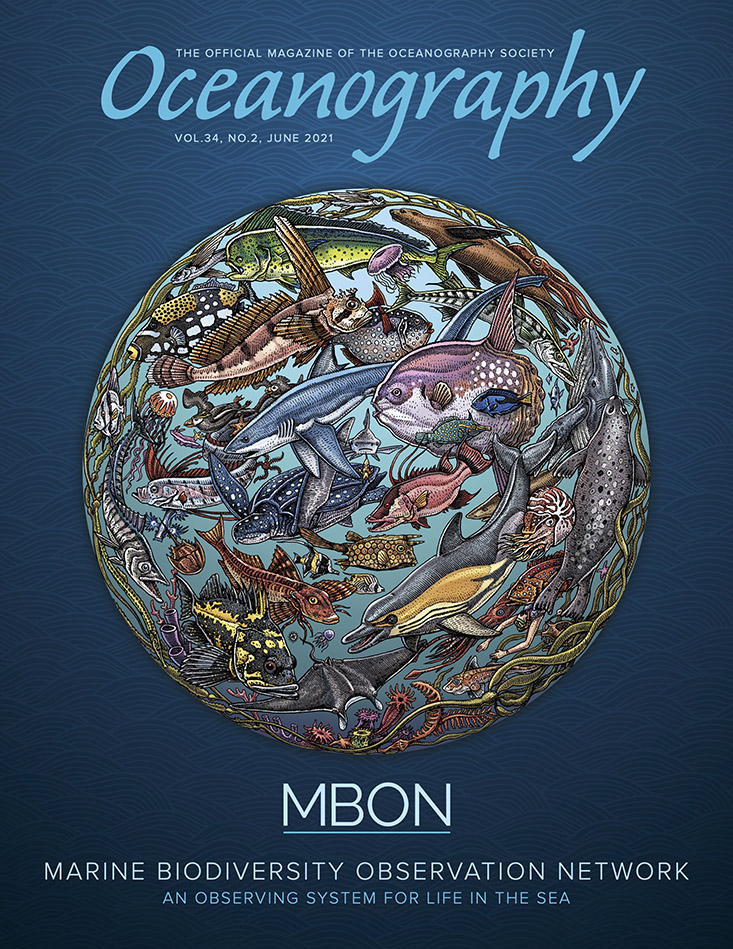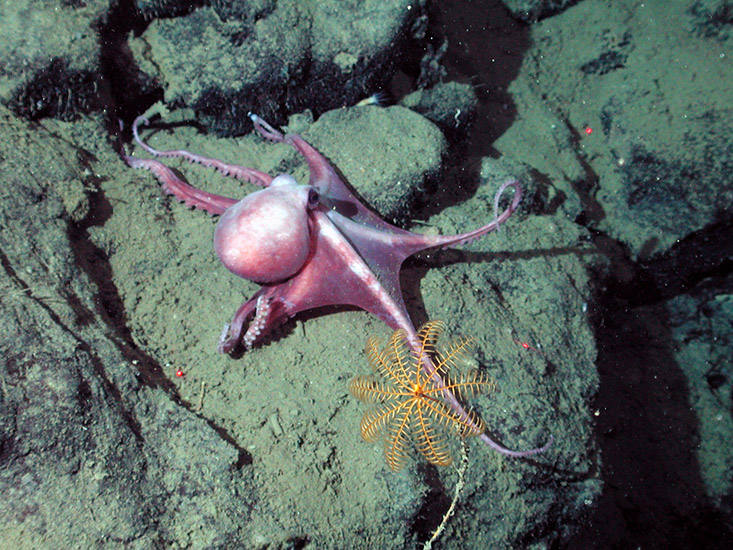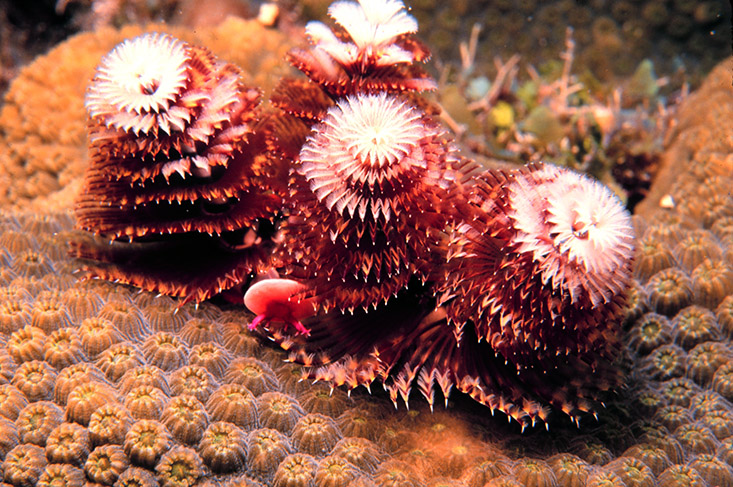Marine biodiversity is vital to humanity. We depend on marine ecosystems for food, the air we breathe, and the climate we live in. The increasing risks to the ocean make observing ocean health imperative to our own survival. But differences in the way people sample and share information, and gaps in the type of information collected make monitoring ocean ecosystems difficult.
The Marine Biodiversity Observation Network (MBON) is tackling these challenges head-on. Since 2014, MBON has been laying the foundation to enhance our understanding of life in the sea from local to global scales. Established by the US National Oceanographic Partnership Program, MBON spans the science to monitor life in the sea to the people and partnerships needed to build and operate a sustained monitoring system.

Cover of the special issue of Oceanography magazine about the Marine Biodiversity Observation Network (MBON) featuring Ray Troll’s rendition of life in the sea colorized by Grace Freeman. Originally featured in the 1994 book Planet Ocean: A Story of Life, the Sea and Dancing to the Fossil Record, by Bradford Matson and Ray Troll (Ten Speed Press, 133 pp.). Credit: Claire Fackler, CINMS/NOAA
The collection of MBON papers published in the special edition of Oceanography this month highlight the groundwork of MBON, from the development of monitoring methods and best practices to the importance of partnerships to advancing data and knowledge systems that are accessible and useful to a wide range of people.
“Laying this foundation requires partnerships across government, academic, and private sector groups. This includes securing the required resources to develop and apply scalable methods that will provide the information required by decision makers to maintain a healthy and sustainable Planet Ocean,” said Francisco Chavez, Senior Scientist and biological oceanographer at the Monterey Bay Aquarium Research Institute (MBARI) in Moss Landing, California.
MBON launched with demonstration projects in the Florida Keys, Monterey Bay, the Santa Barbara Channel, and the Chukchi Sea in the Arctic. From the smallest plankton to the largest whales, it is not only about figuring out “who” and “how many” are present—MBON also seeks to understand how organisms use, move through, and interact with their environment from “birth” to death. MBON leverages a variety of tools to better understand ocean health, coupling information from new and emerging technologies with models to advance ecological forecasting.
One area where MBON has made great progress is developing Seascapes, the ocean equivalent of terrestrial biome maps. Unlike land maps that can show clear demarcations between deserts and forests, ocean environments are more challenging to categorize. By combining information from sensors on satellites with forecast models, MBON is developing dynamic maps that provide information about the quality and extent of oceanographic habitats. Within these Seascapes, assessments about planktonic and fisheries communities can be made.
“We can only manage what we know. Because satellites collect data quickly over very large areas, they help us understand how local changes fit in a larger context as the ocean changes. This is important for coastal communities like ours,” said Frank Muller-Karger, a professor of biological oceanography at the University of South Florida’s College of Marine Science in St. Petersburg, Florida.
As NASA program scientist Woody Turner notes, “What makes MBON so unique—actually exciting—as an observations system is its integration of satellite imagery spanning entire hemispheres to tens of kilometers of the ocean’s surface with observations of the movement of individual organisms from animal tagging along with information gleaned from bits of organisms’ genetic material, literally pieces of DNA, found in ocean waters.”
Similar to what is done for weather observations, the vision for a fully operational MBON is to make routine observations of life in the sea to provide information about status, trends, and shifts over time. Articles presented in the special edition highlight results from the demonstration projects and emphasize the importance of making use of the information gathered to solve real-life challenges—particularly how people and our changing climate are affecting marine life and their habitats—and how these changes impact society.

An octopus (Graneledone boreopacifica) at 1,973 meters water depth on Davidson Seamount, Monterey Bay National Marine Sanctuary. Credit: NOAA/MBARI
“Information about life in the sea is important to a variety of stakeholders, including those tasked with managing living marine resources, protecting ecosystems from invasive species, and safeguarding endangered ones. This information is all the more important as we turn to the ocean for other uses, from mining to sustainable energy. MBON is building partnerships and capacity in the US and globally to contribute to solutions, share information, and support human communities that rely on ocean life,” said Gabrielle Canonico, US MBON Federal Coordinator, NOAA/US Integrated Ocean Observing System.
About US MBON
The US Marine Biodiversity Observation Network (US MBON) is a contribution to the international MBON, and is part of larger global efforts that include the Group on Earth Observations Biodiversity Observation Network (GEO BON) and the Intergovernmental Oceanographic Commission’s Global Ocean Observing System. As a co-lead of the Marine Life 2030 Program of the UN Decade of Ocean Science for Sustainable Development, MBON is working on development of an information management and forecasting system for sustainable development and conservation of life in the sea.
